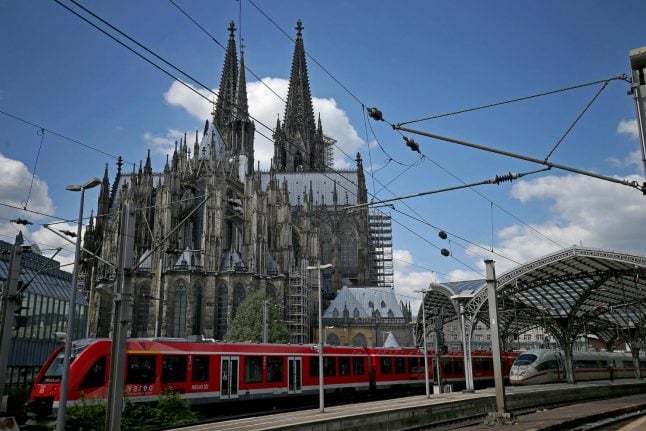High profile architect Paul Böhm wants to see a green oasis and gathering place for people in the centre of the city where the Cologne Hauptbahnhof currently stands, reports Spiegel.
Böhm, one of the designers behind the Central Mosque in Cologne-Ehrenfeld, envisages that regional trains would run underground, and long-distance trains would move to a new station on the other side of the Rhine river.
SEE ALSO: Eat, sleep and fall in love like a Kölner: 8 unique things to do in Cologne
The two stations would be connected by a tunnel under the Rhine.
It would allow the present station hall, which is right next to the stunning Cologne Cathedral — Germany's most visited attraction — to be used for cultural events such as exhibitions, theatre or music shows.
The existing railway line would be transformed into a green space with pedestrian areas and cycle paths that would run right through the city centre, Böhm said.
'Heart of the city'
Böhm revealed his designs at the beginning of the month in local newspaper the Kölner Stadt-Anzeiger and triggered a lively debate in the city shortly before the 125th anniversary of the railway station next Saturday (May 25th).
Cologne's Hauptbahnhof is one of the most important transport hubs in North-Rhine Westphalia and Germany. Around 1,300 trains and up to 280,000 passengers pass through it every day on eleven tracks.
“This location is basically the heart of the city,” said Böhm. “And this centre is currently being used only for railway traffic. I don't think that's appropriate.”
The city mayor Henriette Reker said that Böhm's designs could be “positive”.
However, rail operator Deutsche Bahn reacted cautiously. “There are no plans to move Cologne's main station underground,” said a spokeswoman.
But Böhm believes the project could be reality. “I have spoken to other experts who say: 'This can very well be done,'” he said.
Bad track record on public projects
It's not surprising that there are reservations over public infrastructure projects in Germany given the country's track record.
In Stuttgart a plan to transform its central station has developed into a logistical nightmare — and a sinkhole for public money.
The affluent southern German city has been struggling to revamp its new railway system with a major project known as Stuttgart 21 (so-called because it's meant to represent the 21st century), for years.
In 2017 it was said to cost €7.6 billion, a full €1.1 billion more than the figure projected four years ago.
SEE ALSO: Stuttgart 21 rail project to cost an extra billion euros
Construction, which began in 2010, is also expected to finish four years later than first anticipated, in 2024 instead of 2021.
Meanwhile, the new BER Airport in Berlin has famously hit several obstacles over the years and is expected to cost somewhere between €6 billion and €7 billion when it finally opens. Authorities are not even sure if the October 2020 opening date will happen.
Vocabulary
Underground – unter der Erde
Green oasis – grüne Oase
To trigger (something) – auslösen
The heart of the city – das Herz der Stadt
Appropriate – angemessen
We're aiming to help our readers improve their German by translating words in some news stories. Did you find this useful? Can we do anything else? Let us know.



 Please whitelist us to continue reading.
Please whitelist us to continue reading.
Member comments